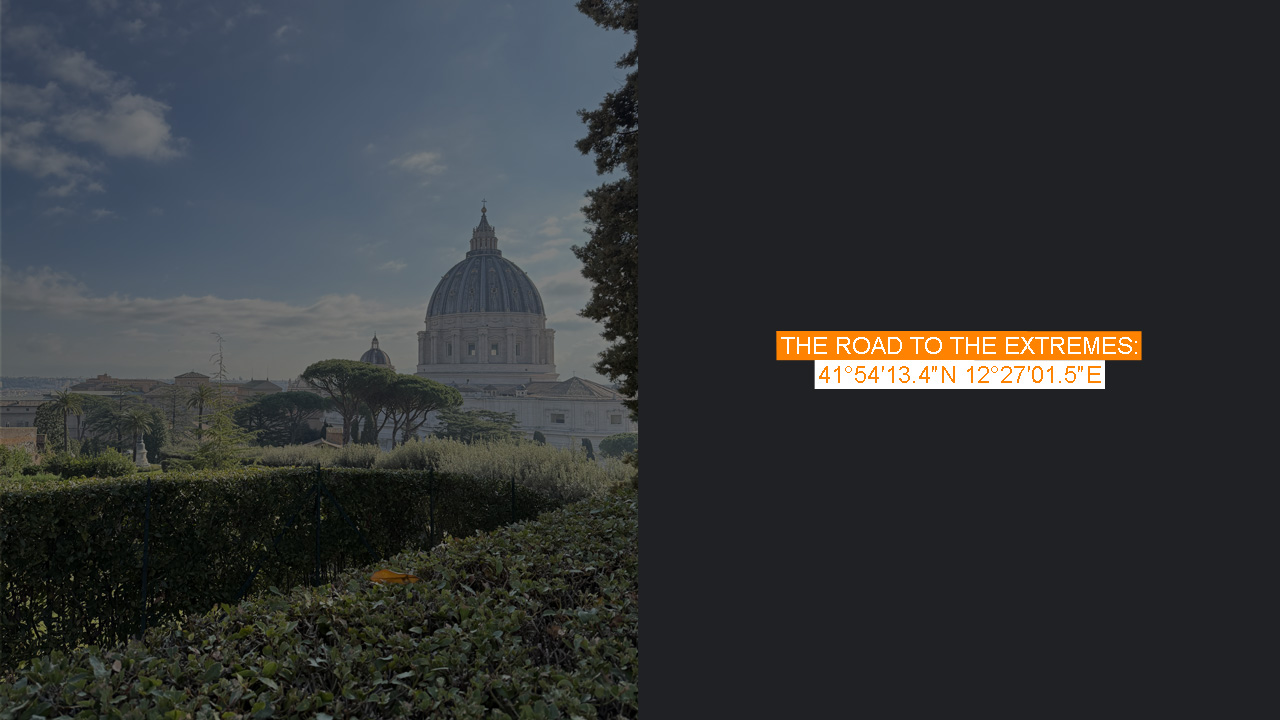The northernmost, southernmost, easternmost, westernmost, highest, and lowest points of Vatican City, as well as its geographical center.
I had read countless warnings that tickets to the Vatican should be purchased in advance, yet there I was, frantically trying to book one for the very next day. But not just any ticket—I was after the elusive admission to the Vatican Gardens, home to the highest point of the Vatican. Unlike the museums, which anyone can wander through at their leisure, the gardens are only accessible with a guided tour.
Naturally, the English tours were sold out. The only available slot was on the morning of my departure from Rome and Italy. I hastily tried to secure it, but my phone refused to cooperate. Some essential terms needed to be accepted, but the button to do so was inexplicably missing on my iPhone. By the time I figured out a workaround, the spot had vanished.
Desperate, I noticed there were still openings for the German-language tour. I had studied German for over a decade in my younger years—surely, I could grasp enough to make sense of it. Or could I?
The tour was scheduled for 9:30 AM, with a recommendation to arrive 30 minutes early for security, identification, and ticket inspection. Determined not to miss my chance again, I left my hotel in Trastevere at dawn, embarking on an hour-long walk to the Vatican. Along the way, I passed through St. Peter’s Square, pausing briefly at the lowest point of the Vatican, a mere 19 meters above sea level, right next to the towering obelisk.
Upon arrival, I mistakenly entered the security checkpoint at the square, only to learn it was meant for those visiting St. Peter’s Basilica. A helpful guide pointed me toward the Vatican Museums, a ten-minute walk away along the imposing city walls. Time was ticking, and their strict instructions to be punctual loomed in my mind.
Luckily, thanks to my pre-paid ticket, I bypassed the growing queue. On my way to the museum entrance, I inadvertently crossed yet another geographical marker—the northernmost point of the Vatican, located at the intersection of Viale Vaticano and Via Leone IV. A small, satisfying victory for a geography enthusiast like me.
After a thorough security check, I finally joined my tour group. As expected, it was entirely in German, but I wasn’t alone in my linguistic struggle. A woman from the UK had also taken the gamble, and later, I discovered at least one other person who understood even less than I did.
Most visitors opt for the standard museum ticket, which doesn’t include the gardens—perhaps due to the limited availability of tours or the doubled price. But as the guide unlocked a heavy gate with an actual key and ushered us inside, I immediately understood why this place was special. The moment the gate clanked shut behind us, the bustling chaos of the Vatican was replaced by a serene, almost ethereal world.
I had primarily booked the tour to reach the highest point of the Vatican—76 meters above sea level, located in the French Garden near Vatican Radio. But what I hadn’t anticipated was just how breathtaking the gardens would be. Words and pictures simply don’t do them justice; they must be experienced firsthand. From here, the view over the gardens and into Rome was spectacular.
To my surprise, the tour also led us past the easternmost point of the Vatican. If I understood correctly with my limited German, this spot once held a tennis court, now replaced by a heliport. Similarly, the tour passed the geographical center point of Vatican that lies just next to Casina Pio IV, a patrician villa that accommodates the Pontifical Academy of Sciences, the Pontifical Academy of Social Sciences, and the Pontifical Academy of St. Thomas Aquinas. Completed in 1562, it is an extremely beautiful building. In addition to the academies, a few lucky turtles can call it home.
The tour lasted a staggering three hours, leaving even the most eager explorers visibly drained. When we finally reached the museums, most of my group opted for the shortest route through the exhibits. I, however, stubbornly chose the longer path, savoring every bit of history before finally emerging back into the Roman spring.
Four hours after stepping inside, I walked out of the Vatican, exhausted but exhilarated. I had done it. I had stood at the Vatican’s westernmost, easternmost, northernmost, southernmost, lowest, and highest points.
That evening, I laced up my running shoes and jogged around the Vatican under the glow of streetlights. The next day, I retraced my steps on foot, pondering the curious nature of the Vatican’s borders. Established in 1929 with the Lateran Treaty, the Vatican’s limits are clearly outlined on official maps, following the city’s imposing walls. But here’s where it gets tricky—those walls slope outward, meaning the precise locations of the easternmost, southernmost, and northernmost points are practically inaccessible unless you’re Spider-Man. Touch the wall, and your hand is in the Vatican, but your body remains in Italy. Strangely enough, these exact sections have been erased from Google Street View. Coincidence? Or did Google avoid capturing them to prevent any territorial ambiguity?
Regardless of the mysteries surrounding its borders, my visit to the Vatican had been nothing short of extraordinary.

